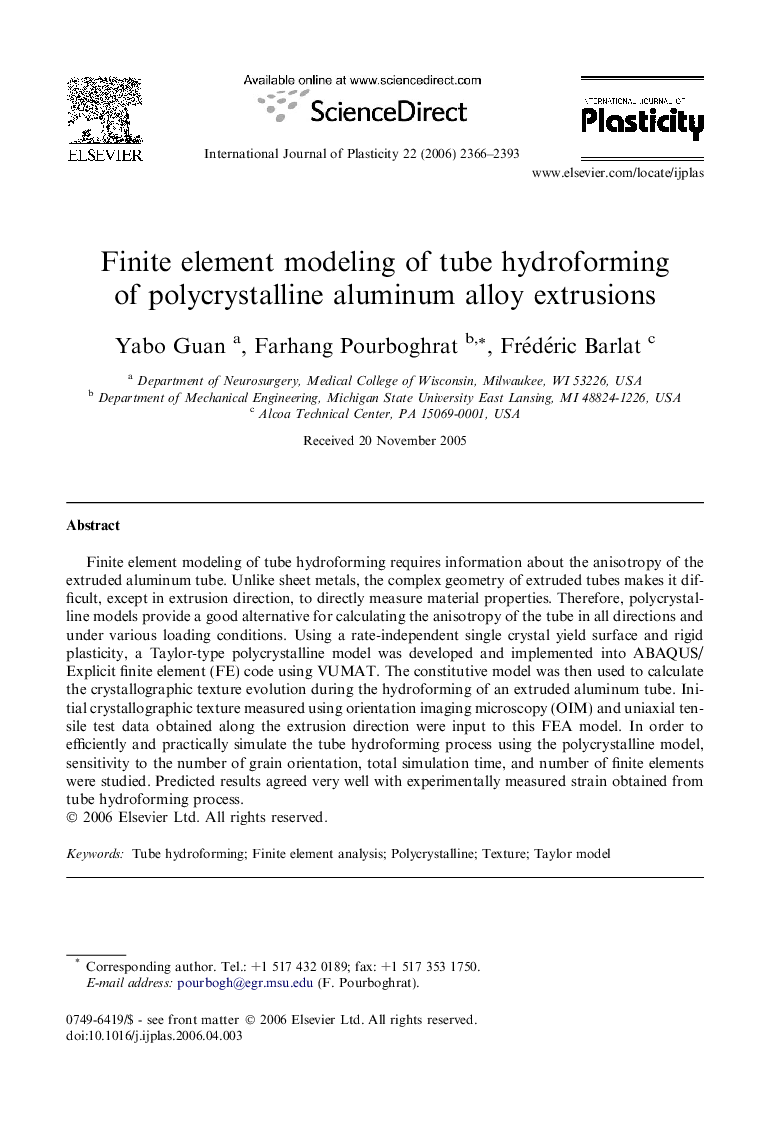| Article ID | Journal | Published Year | Pages | File Type |
|---|---|---|---|---|
| 786658 | International Journal of Plasticity | 2006 | 28 Pages |
Finite element modeling of tube hydroforming requires information about the anisotropy of the extruded aluminum tube. Unlike sheet metals, the complex geometry of extruded tubes makes it difficult, except in extrusion direction, to directly measure material properties. Therefore, polycrystalline models provide a good alternative for calculating the anisotropy of the tube in all directions and under various loading conditions. Using a rate-independent single crystal yield surface and rigid plasticity, a Taylor-type polycrystalline model was developed and implemented into ABAQUS/Explicit finite element (FE) code using VUMAT. The constitutive model was then used to calculate the crystallographic texture evolution during the hydroforming of an extruded aluminum tube. Initial crystallographic texture measured using orientation imaging microscopy (OIM) and uniaxial tensile test data obtained along the extrusion direction were input to this FEA model. In order to efficiently and practically simulate the tube hydroforming process using the polycrystalline model, sensitivity to the number of grain orientation, total simulation time, and number of finite elements were studied. Predicted results agreed very well with experimentally measured strain obtained from tube hydroforming process.
